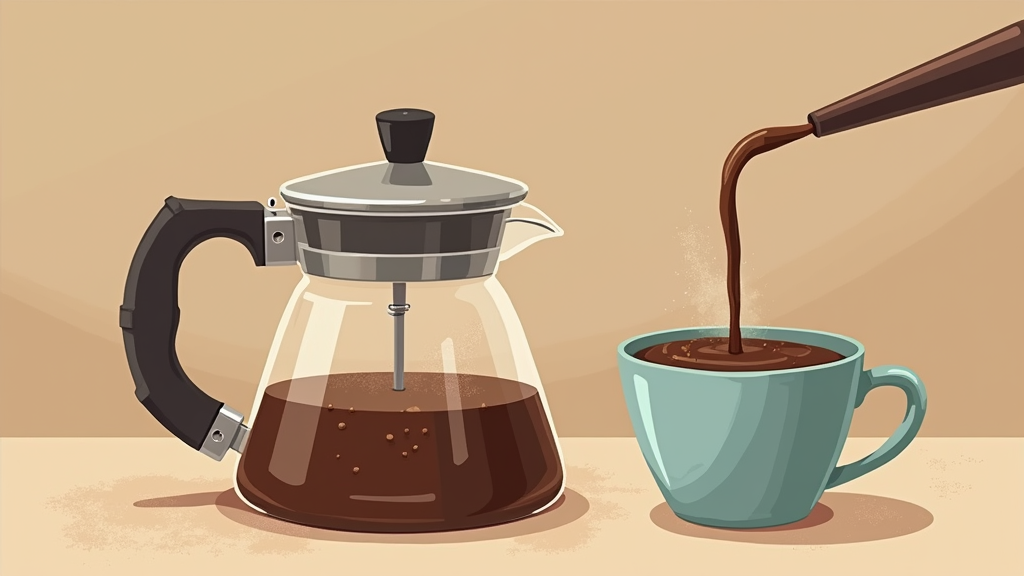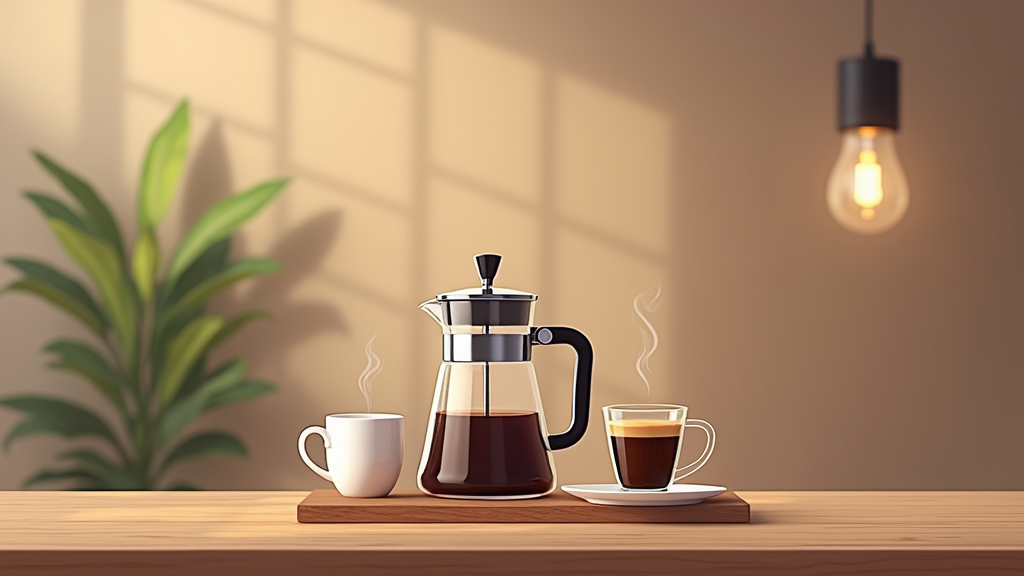Table of Contents
- Crafting the Perfect Cup: How to Outline Your Coffee Brewing
- Understanding How to Make the Best Coffee
- Defining Key Coffee Extraction and Bloom Concepts
- Core Principles for Crafting Perfect Coffee
- Essential Components for Brewing Amazing Coffee
- Key Aspects of Coffee Beans and Water Temperature
- Exploring Coffee-to-Water Ratio and Water Quality
- Burr vs. Blade Grinders and Filter Types Impact
- Single-Origin vs. Blends and Brewing Methods
- Detailed Guide: How Do You Make the Best Coffee
Crafting the Perfect Cup: How to Outline Your Coffee Brewing

Why a Great Coffee Outline Matters: The Art of Brewing
Brewing exceptional coffee is both an art and a science. It requires understanding the nuances of each step, from selecting the right beans to mastering the brewing process. Over 50% of adults in the United States enjoy coffee daily, and the specialty coffee market is experiencing substantial growth, indicating a desire for higher-quality coffee experiences. Outlining your brewing process allows you to elevate your daily routine by consistently producing a superior cup of coffee.
Coffee’s Journey: Historical Context in Your Brewing Outline
Coffee’s rich history, from its ancient origins to its integral role in modern-day culture, influences how we appreciate and approach brewing today. Recent developments in brewing equipment and coffee bean sourcing have further refined the process. By understanding this background, you can create a more informed and effective coffee brewing outline.
Mastering Coffee: Outline Focus on Brewing Fundamentals
This guide will cover core concepts like freshness, grind size, water quality, and various brewing methods. You’ll learn practical applications, including step-by-step guides for different brewing techniques, ensuring you have a comprehensive coffee brewing outline to follow.
Understanding How to Make the Best Coffee
Defining Key Coffee Extraction and Bloom Concepts
To understand how to make the best cup of coffee, it’s crucial to grasp a few fundamental concepts. Extraction refers to the process of dissolving soluble compounds from coffee grounds into the water. A good extraction yields a balanced and flavorful cup. Underextraction results in sourness, while overextraction leads to bitterness.
Another important concept is the bloom. When you first wet freshly ground coffee, you’ll notice a bubbling effect – this is the release of carbon dioxide (CO2). Allowing the coffee to bloom for about 30 seconds degasses the grounds, leading to a cleaner, more flavorful brew.
Core Principles for Crafting Perfect Coffee
Consistency and balance are the core principles for crafting the perfect cup of coffee. Consistency means achieving repeatable results by using precise measurements of coffee and water, consistent grind size, and controlled brewing time. Balance refers to harmonizing the acidity, sweetness, and bitterness in the final cup. A well-balanced cup of coffee is neither too sour nor too bitter, but rather a pleasant combination of all three.
Essential Components for Brewing Amazing Coffee
Making the best coffee requires specific components. You’ll need high-quality coffee beans, filtered water, a reliable grinder, a brewing device, and a timer. Each of these elements plays a crucial role in the final outcome.
Key Aspects of Coffee Beans and Water Temperature
The origin and roast level of your coffee beans significantly impact the flavor profile. Light roasts tend to be more acidic and floral, while dark roasts are bolder and more bitter. Water temperature is also critical; aim for 195°F – 205°F (90-96°C) for optimal extraction.
Exploring Coffee-to-Water Ratio and Water Quality
The coffee-to-water ratio is another essential factor. A general guideline is to use a ratio of 1:15 to 1:18 (coffee to water). Water quality matters too. Hard water can negatively affect the flavor of your coffee, so using filtered water is recommended. The ideal water pH level is around 7.
Burr vs. Blade Grinders and Filter Types Impact
The type of grinder you use significantly affects grind consistency. Burr grinders produce a more uniform grind compared to blade grinders, leading to better extraction. Filter type (paper or metal) also influences the final cup. Paper filters trap more oils, resulting in a cleaner cup, while metal filters allow more oils to pass through, creating a richer, fuller-bodied brew.
Single-Origin vs. Blends and Brewing Methods
Single-origin coffees offer unique flavor profiles characteristic of their specific region, while blends combine different beans for a more balanced or complex taste. Different brewing methods, such as pour-over, French press, or espresso, have specific requirements for grind size, water temperature, and brewing time, all of which are crucial for how do you make the best cup of coffee.
Detailed Guide: How Do You Make the Best Coffee

Coffee Preparation: Essential Materials and Initial Setup
To begin crafting the perfect cup, gather these materials:
- Freshly roasted coffee beans (check the roast date).
- Filtered water for optimal flavor extraction.
- A burr grinder for consistent coffee grounds.
- A gram scale for accurate coffee measurements.
- A kettle with temperature control for precise brewing.
- Your preferred brewing device (Aeropress, Chemex, French Press, etc.).
- A timer to monitor brewing time.
Follow these initial setup steps:
- Grind your beans immediately before brewing to retain freshness.
- Heat the filtered water to the ideal temperature (195°F – 205°F).
- Prepare your chosen brewing device, inserting a filter if necessary.
Keep these important considerations in mind:
- Pre-wet the filter to eliminate any paper taste (especially for pour-over methods).
- Warm up the brewing device to maintain temperature stability during brewing.
- Ensure all equipment is clean to prevent residue from affecting the taste.
Step-by-Step: Brewing Coffee for Different Methods
Follow these clear instructions based on your preferred brewing method:
- Aeropress:
- Chemex:
- French Press:
- Pour-Over (V60, Kalita Wave):
- Auto-Drip:
- Grind coffee finely.
- Use 17 grams of coffee.
- Add 250 grams of hot water.
- Steep for 1 minute 15 seconds.
- Press.
- Grind coffee medium-fine.
- Use 32 grams of coffee.
- Gradually add 500 grams of hot water.
- Aim for a total brewing time of 3 minutes 30 seconds to 4 minutes 15 seconds.
- Grind coffee coarsely.
- Use 35 grams of coffee.
- Add 500 grams of hot water.
- Stir gently.
- Steep for 4 minutes.
- Press the plunger slowly.
- Grind coffee medium-fine.
- Use 32 grams of coffee.
- Pour 500 grams of hot water gradually.
- Target a total brewing time of 3 minutes 30 seconds to 4 minutes 15 seconds.
- Grind coffee medium-fine.
- Use about 6 tablespoons of coffee for 24 ounces of water (adjust to taste).
- Press start.
Adhere to these best practices for consistent results:
- Bloom the coffee grounds with a small amount of hot water (about twice the weight of the coffee) for 30 seconds.
- Pour water slowly and evenly to ensure thorough saturation of the grounds.
- Use a timer to accurately monitor the extraction time.
Avoid these common mistakes that can compromise your brew:
- Using stale coffee beans, which lose their aroma and flavor.
- Grinding beans too far in advance, leading to oxidation.
- Using water that is either too hot (causing bitterness) or too cold (resulting in sourness).
- Over- or under-extracting the coffee, impacting its overall balance.
Advanced Coffee Techniques: Expert Tips and Optimization
Employ these expert tips to elevate your coffee brewing:
- Experiment with different coffee-to-water ratios to personalize the strength of your brew.
- Adjust the grind size based on the brewing time and your taste preferences.
- Consider the mineral content of your water, as it can significantly affect the flavor profile.
Optimize your brewing process with these advanced methods:
- Use a refractometer to measure coffee extraction levels for precise control.
- Dial in your grinder to achieve a consistent particle size distribution.
- Explore different water filtration methods to refine the taste of your water.
Troubleshoot common coffee issues:
- Bitterness:Adjust the grind size coarser, reduce the brewing time, or lower the water temperature.
- Weak coffee:Adjust the grind size finer, increase the coffee-to-water ratio, or increase the brewing time slightly.
- Sourness:Increase the water temperature or grind the coffee finer.

